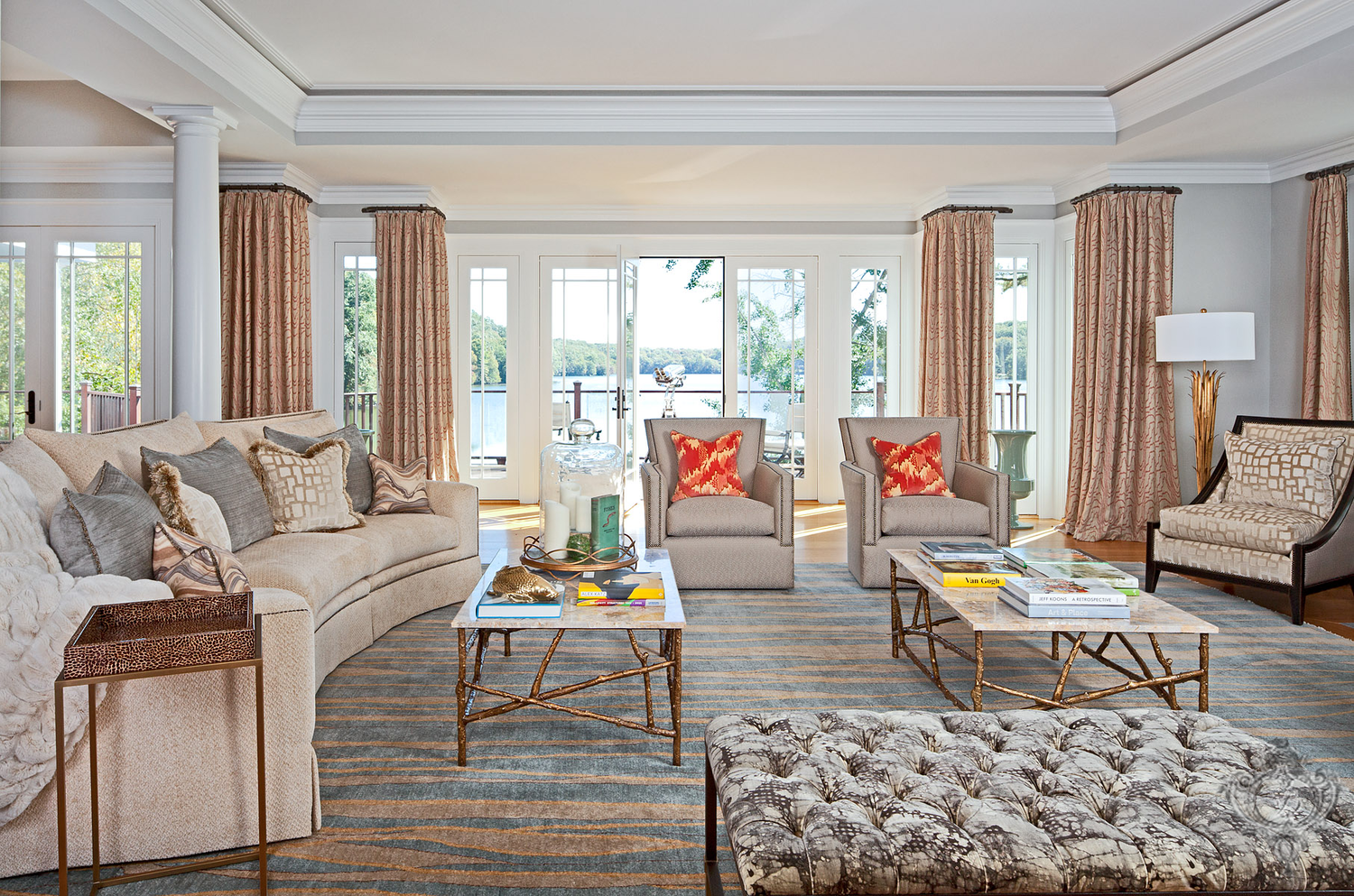How to Make Your Home Look Like You Worked with a Designer
You want your home to look fabulous, offer comfort to your family, and give out welcoming vibes to guests as soon as they cross your threshold.
The right furniture, artwork, and decor are essential.
Unfortunately, creating the home of your dreams is anything but easy. With so many aspects to think about - wallpaper, paint color, flooring, fabrics, and more – it’s easy to see why so many people look to an interior designer to bring their vision to life. But what if you can’t afford to hire a designer or would instead want to handle everything on your own?
While creating well-designed living spaces certainly isn’t easy, it’s also not impossible. We're confident that the following tips can help you achieve that ultimate designer look all on your own.
Consider How Your Going to Be Using the Space
A well-designed home is as functional as it is beautiful.
Before you begin picking out paint colors, decor, furniture, and accessories, you need to consider how your space will be used. Then, every piece of furniture you select should serve a purpose contributing to your overall goal for the room.
Are you designing a family room? Don’t choose an open shelf with baskets and throw it in the back corner of a room to store children's toys. Hidden toy storage is your best bet for keeping the space uncluttered, so opt for a storage ottoman or a cool tall closed cabinet that you could repaint in a fun, bold color.
Steer Clear of Matching Furniture Combos
You’re not going for a cookie-cutter look.
A well-designed home appears curated and unique. That’s why no reputable designer would ever suggest you purchase a matching furniture set.
A family heirloom or an upcycled piece will make the room truly yours. And don’t be afraid to mix patterns and colors. You’d be surprised how well a couple of bold-patterned swivel chairs combine great with a subtle plain washable fiber sofa.
Finally, keep scale top of mind when you're shopping for furniture. Nothing is more disappointing than a room filled with small incidental pieces that looked great in a catalog but were swallowed up by the room. And don’t forget to measure your front door before you make any furniture purchase. That awesome couch won’t look so amazing if you can’t even get into your home!
Looking for Artwork? Go for Big and Bold.
Artwork can do much for a space, provided it’s thoughtfully collected.
Again, scale matters. A giant piece of art will look far better on a large wall than a small piece. Too many small items will also make your room look cluttered, so accessorize with varying sizes.
When searching for art, don’t overlook your collection of family photos - but remember that less is often more. You don’t need to display every framed picture you’ve collected over the years. Select the most important to you and your family, showcasing them in frames that relate to both size and finish. As you search for the right frame, be discerning. A frame can be more than a tchotchke, but a decorative accessory that brings your space to life.
Choosing a Rug? Bigger is Probably Better.
An area rug is a great design tool that can do a lot to anchor a room and create a focal point.
But never center a small rug under a cocktail table. Instead, use a more extensive area rug to create an intimate conversation space. The rug should encompass the entire seating area.
If you’re designing an open-concept space, you might want to use several area rugs to define different sections of the room. While you can use various-sized rugs, each should be appropriately sized for the area you’re attempting to define. But remember, big is always going to look better than too small.
Shed Some Light on the Subject
Lighting is no longer considered merely a necessity – it's an essential design element that can be used to create mood and drama.
Lose that old ceiling fan coated in dust and opt for an artistic pendant that can double as a focal point. Lamps and ceiling fixtures can leave dead light space, so be sure to include some well-purposed LED recessed fixtures for accent lighting,
What to Do About Walls?
No one is saying that white, gray, or beige walls can’t make for a fabulous space. But if you want to create a one-of-a-kind designer look, you need to move away from your comfort zone just a bit.
Consider creating an accent wall with a bold painted color to set the space apart in an open-plan home. Maybe paint your center island in the kitchen a contrasting color.
And don’t overlook wallpaper. Frankly, wallpaper is the best way to add a decorated feel to just about any drab room. A boldly patterned wallcovering and a contrast-painted ceiling might be just the combo to bring that tiny powder room to life!
Don’t Forget Your Bedroom!
It’s easy to overlook your bedroom when you embark on a home redesign project. After all, you’re the only one who’s going to see the master, right?
Well, that’s exactly why your bedroom should be a design priority.
We all need a private retreat where we can relax and rejuvenate. So invest a little time and effort into your well-being, and create the one-of-a-kind haven you’ve always dreamed of!
Connect with Kellie Burke Today
You and your guests deserve to feel impressed and inspired whenever you enter your space.
Award-winning design firm Kellie Burke Interiors specializes in creating livable luxurious spaces for high-end clientele worldwide.
Browse our portfolio to learn more about our residential and commercial interior design services. Connect with us today to discover how Kellie and her team can help make your vision a reality.

